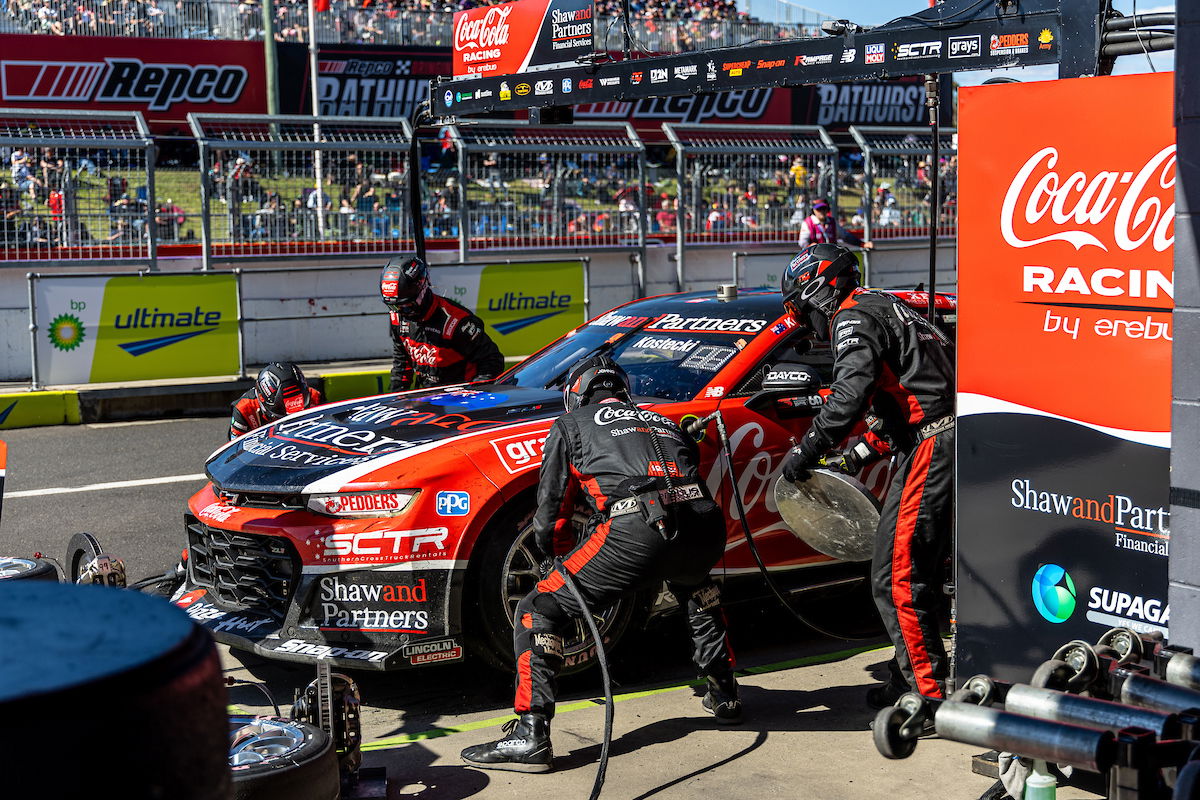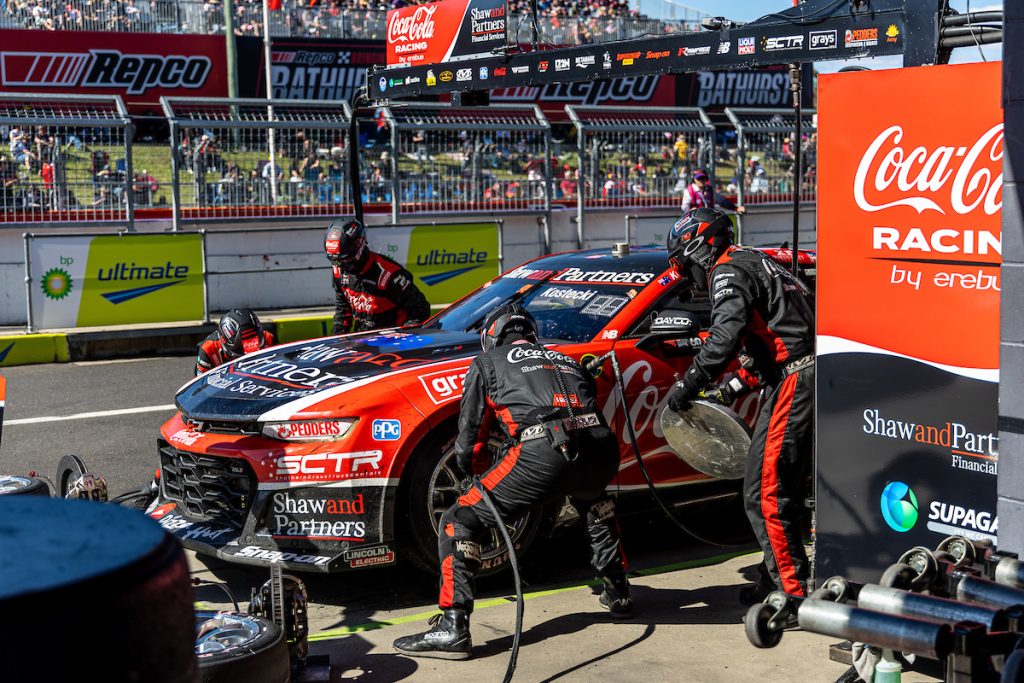

Supercars deviated from the hardest compound in the Dunlop control tyre range for last year’s Great Race, when the Gen3 cars made their competitive debut at Mount Panorama.
The thought was that lighter cars, with lower corner loads, could accommodate softer rubber, which did prove to be the case.
The rate of degradation meant that stint length was governed more so by tyre life than by fuel consumption, the latter of which was the overriding factor in the past.
However, that development coincided with a relatively dull Bathurst 1000 – mechanical dramas notwithstanding – with the strategic imperative to conserve rubber, as well as the extent of marble build-up off-line, being blamed.
The change back to hard tyres may well be a response to such criticism, so we ask if you think it is the right move.
Worth noting is that the format for the Bathurst 500 is more conducive to the soft tyre, given an average stint length would be no more than 20 laps (13.3 in the case of two compulsory pit stops), less than was fairly typical at last year’s Bathurst 1000.
Nevertheless, how teams and drivers choose to attack those two, 250km encounters will be instructive for the 2024 Great Race, for which soft tyres are understood to currently be pencilled in.
But, what do you think?
Do you want to see drivers have to balance up driving conservatively versus the risk of pushing their tyres over the cliff edge?
Or, do you want to see them incentivised to push all the time because the rubber will hold on? It makes for one less variable, but it does promote ‘qualifying laps’ towards the end of the race, when fuel loads have lightened.
Cast your vote below in this week’s Pirtek Poll and check back on Friday to see what Speedcafe readers had to say on the topic.



















Discussion about this post